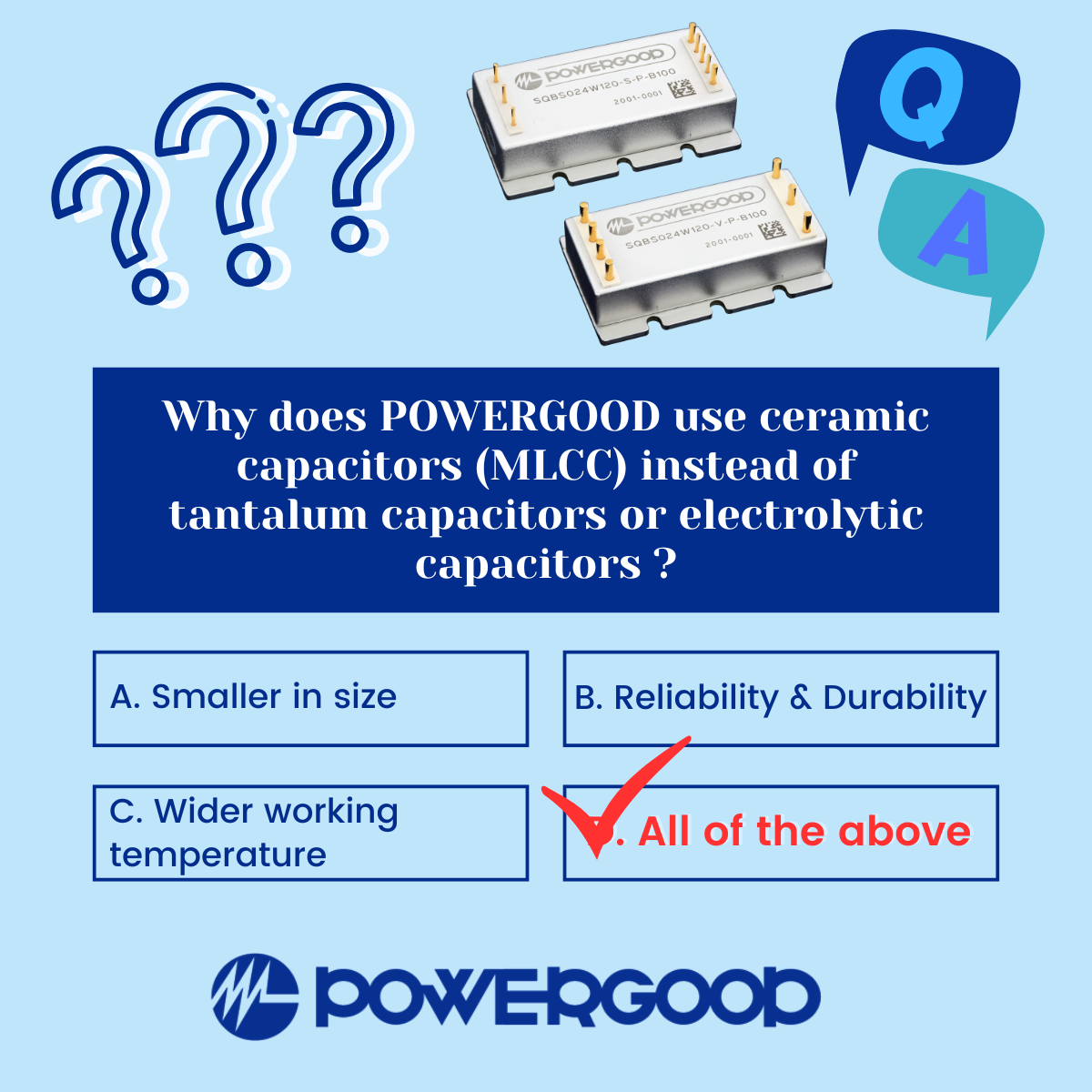POWERGOOD Classroom: Why does POWERGOOD use ceramic capcitors (MLCC) instead of tantalum capacitors or electrolytic capacitors

🙌 FAQ of POWERGOOD's power modules🙌
Why does POWERGOOD use ceramic capcitors (MLCC) instead of tantalum capacitors or electrolytic capacitors ❓
What are MLCCs❓ What are their advantages❓
📢Today, let me clarify your question!
MLCC = Multilayer Ceramic Capacitor
--- Advantages ---
🔺Small in Size: MLCCs are very compact, making them ideal for modern, space-constrained devices
➡️Maximize the power density ratio of POWERGOOD's modules
🔺Reliability & Durability: MLCCs are extremely durable and highly reliable components. There is no life-span constrained
➡️Assure the reliability of POWERGOOD's modules and stable performance over time
🔺Wider working temperature: MLCCs are designed to operate within a wide temperature range. Modules with MLCC can widely be used for various application
➡️POWERGOOD's modules were born for rugged usage
In contrast, electrolytic capacitors are large, with shorter life and prone to failure after volatilization ❌
Therefore, with MLCCs, POWERGOOD's modules are highly reliable, no life-span constrained and can work under super wide temperature still with amazingly stable performance 🦾
If you still have any question in the sector of power supply
👀 Take a look at the FAQ we gather from customers during these years via